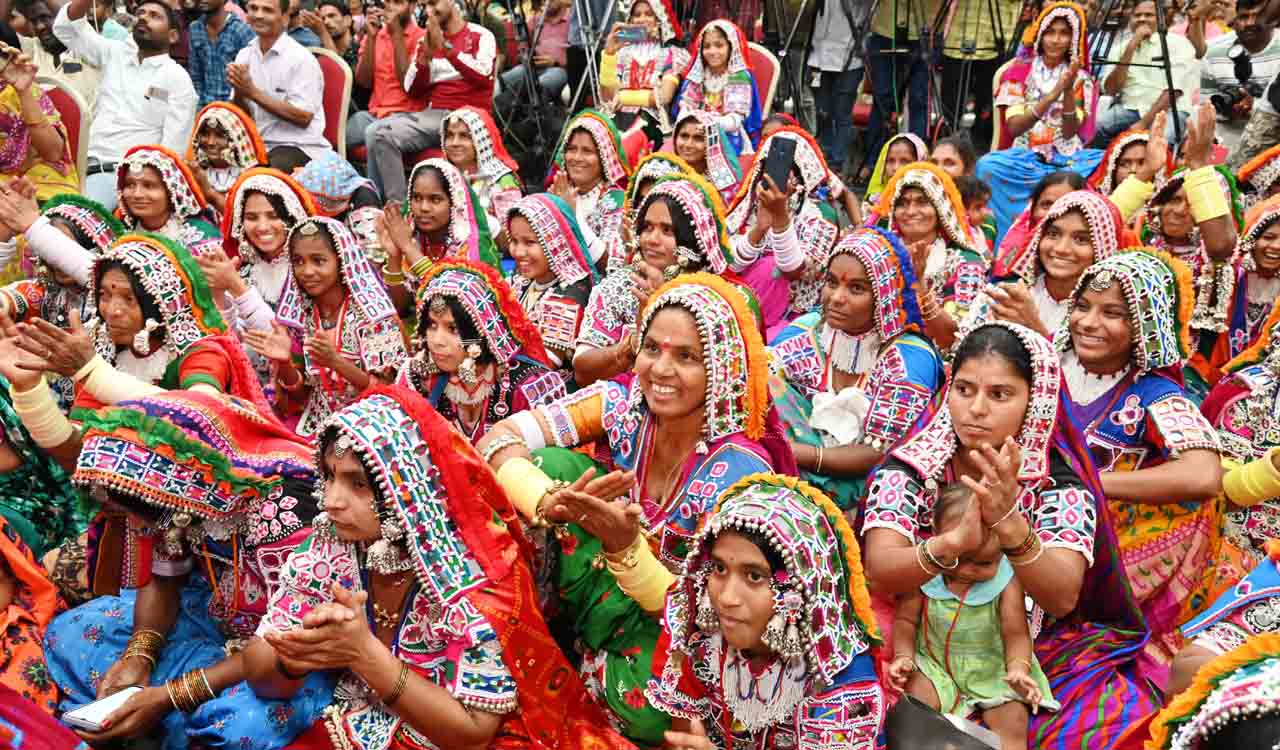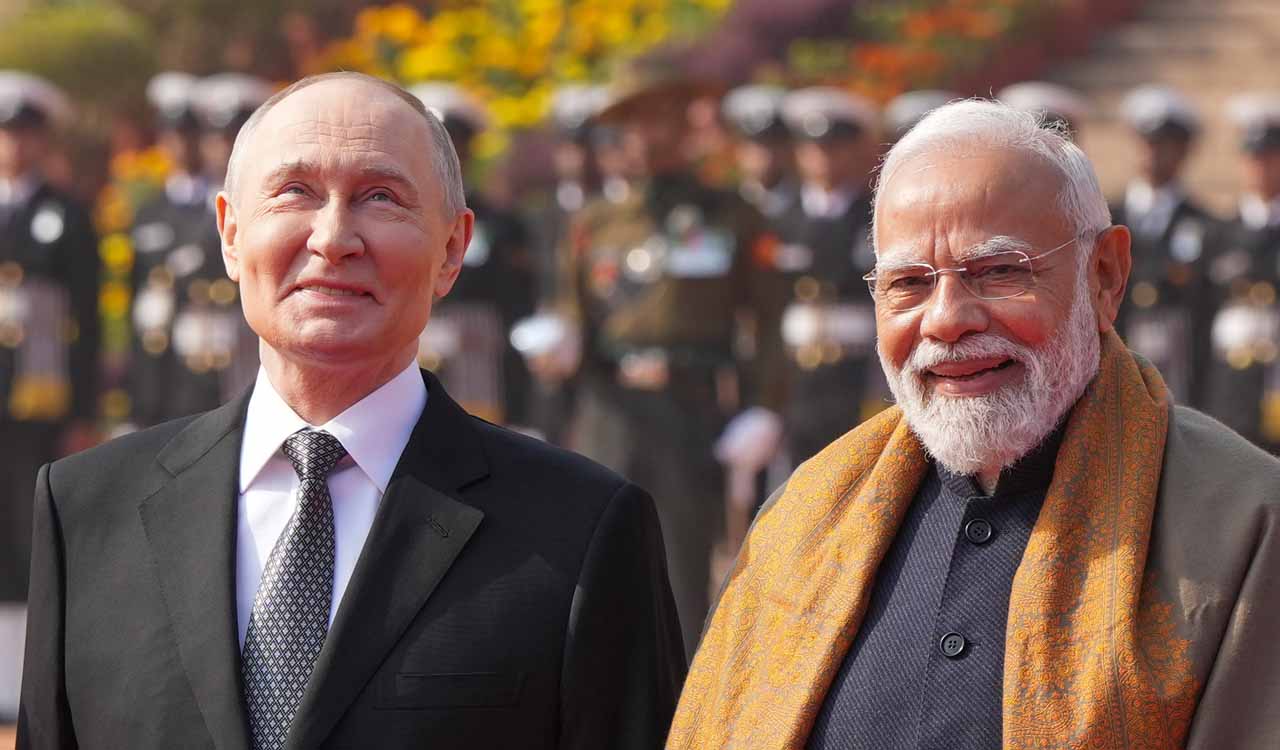Opinion: Tribal justice must unite, not divide, Telangana’s Adivasi communities
Demands to delist Lambadis from Telangana’s Scheduled Tribe list ignore history, law, and ground realities

By Vijay Korra
From time to time, demands surface from Adivasi communities in Telangana to remove the Lambadis from the Scheduled Tribe (ST) list, arguing that they corner a disproportionate share of reservation benefits and deprive others of rightful opportunities. These claims often extend further, alleging that Lambadis are not genuine STs, are migrants from Rajasthan and Maharashtra, were accorded ST status without parliamentary sanction, and are now too advanced to require affirmative action.
Also Read
Yet such assertions lack substantive evidence. In this contested context, it is essential to revisit the constitutional and historical foundations of Lambadi inclusion and to prioritise strengthening inclusive tribal justice.
Cultural and Constitutional Identity
The Lokur Committee (1965) outlined six criteria for identifying Scheduled Tribes: a distinctive culture, use of a tribal language or dialect, celebration of unique festivals and adherence to tribal norms, social and economic backwardness, shyness in interacting with outsiders, and residence in remote or isolated areas. The Lambadis, also known as Banjaras, clearly meet these benchmarks. They have preserved a vibrant cultural identity expressed through distinctive dress, customs, rituals, and religious practices.
Festivals such as Teej, Sheetla, and Tulja Bhavani are celebrated with unique traditions, while Maramma is revered as a central deity. Spiritual leaders like Hathiram Bapu and Sevalal Maharaj remain deeply respected. Even mainstream festivals such as Deepavali and Holi are observed in distinctive ways, setting them apart and affirming their tribal identity.
Historical Migration and Legal Recognition
It is true that Lambadis trace their ancestry to Rajput clans in Rajasthan and have migrated across India for centuries. Their dispersal was shaped by Mughal invasions, resisted by rulers such as Prithviraj Chauhan and Rana Pratap Singh, and later by British colonial persecution of Banjaras, who were branded as a “criminal tribe” under colonial law.
Over time, Lambadis became itinerant traders of salt, grain, and other essentials, and later suppliers to Mughal armies. Their mobility led to settlement in diverse regions, including Telangana, where they have lived for centuries. The claim that Lambadis were granted ST status without parliamentary approval is factually incorrect. The Scheduled Castes and Scheduled Tribes Orders (Amendment) Act of 1976 legally extended ST status to Lambadis in Andhra Pradesh, including Telangana. This amendment followed the constitutional process under Article 342, the same procedure later used to introduce reservations for Economically Weaker Sections (EWS) in 2019. Their inclusion is therefore both historically grounded and legally valid.
Misconceptions About Development
A recurring allegation is that Lambadis benefit disproportionately from reservations. This perception is partly explained by their larger population, relatively higher literacy levels, and greater willingness to migrate to urban areas for education and employment. Their adaptability to social change has enabled them to make better use of constitutional provisions. However, the claim that
Lambadis are economically advanced and no longer need reservations is misleading.
While some sections of the community have progressed, the majority remain disadvantaged. Poverty, distress migration, trafficking, labour exploitation, and discrimination are widespread. Human development indicators for Lambadis remain significantly lower than those of non-tribal communities in Telangana. Only a moderate portion of the community has been able to utilise reservations effectively, and without these provisions, their gains in literacy and employment would have been far more limited.
The real issue, therefore, is not whether Lambadis benefit more, but why other Adivasi groups are unable to fully access the opportunities available to them. Structural barriers, socio-cultural constraints, and ineffective delivery of welfare schemes have hindered their progress. This imbalance should be addressed through targeted interventions rather than exclusionary demands.
Purpose of Reservation
The constitutional purpose of reservation is not to freeze communities in backwardness but to enable their upward mobility. If progress by a community becomes the basis for its exclusion, the very logic of affirmative action is undermined. The paradox is evident: when a community like the Lambadis makes effective use of reservations, it is accused of being “too advanced” to deserve them.
This raises a fundamental question—are reservations meant to uplift communities or to keep them perpetually disadvantaged? The Lambadis illustrate how constitutional provisions, when combined with community aspiration, can yield tangible progress. Many have diversified their livelihoods, engaging in construction work, running mobile food centres, roadside eateries, and hotels, and fruit stalls.
Agriculture and livestock remain central to their economy, but these are gradually being modernised and commercialised. The community is evolving, seeking new opportunities, and carving out a developmental path distinct from other tribal groups. Their experience should be seen as an example of how reservations can work, not as a reason for exclusion.
Pressing Challenge
The debate over Lambadi inclusion should not overshadow the larger and more pressing challenge of ensuring equitable development for all tribal groups in Telangana and across India. The real question is not whether one community benefits more than another, but why existing policies have failed to deliver the intended outcomes for many Adivasis, why reservations are not reaching the poorest, and where governments have fallen short in implementation.
The way forward lies in designing targeted programmes that address the diverse needs of different tribal groups. These must include educational interventions to improve access to quality schools, scholarships, and higher education; skill and vocational training to equip youth with employable skills relevant to both local and urban job markets; and livelihood diversification by supporting agriculture, livestock, and small enterprises with modern techniques and credit access.
Equally important are awareness campaigns that sensitise communities to the importance of education and social mobility, alongside the prioritisation of Particularly Vulnerable Tribal Groups (PVTGs) such as the Chenchu, Konda Reddis, and Kolam, who require special attention to overcome extreme backwardness. Yet, the success of such initiatives depends not only on their design but on effective and transparent implementation.
India does not lack tribal development programmes; what it lacks is last-mile delivery. Leakages, inefficiencies, and bureaucratic hurdles often prevent benefits from reaching intended beneficiaries, making it essential to strengthen accountability mechanisms and involve local communities in monitoring to ensure that welfare schemes achieve their intended impact.
The call to delist Lambadis from the Scheduled Tribe category is neither constitutionally valid nor socially just, and risks creating deeper rifts among tribal groups when unity is most needed. The real challenge lies not in exclusion but in ensuring that every community, particularly the most vulnerable, can access and benefit from affirmative action.
The Lambadis’ progress demonstrates the transformative potential of reservations, while the struggles of other Adivasis highlight the need for targeted interventions. Only through inclusive policies, transparent implementation, and a firm commitment to equity can India honour its constitutional promise of uplifting all tribal communities equally.

(The author is an Assistant Professor at the Centre for Economic and Social Studies (CESS) in Hyderabad)
Related News
-
Three Americans killed; U.S. vows response to ISIS attack in Syria
2 hours ago -
Women’s rescue team shines as Singareni wins big at All India Mines Rescue Competition
3 hours ago -
Komuravelly Kalyana Mahotsavam to mark start of annual jathara
3 hours ago -
Over 8 lakh voters to cast ballots in Arunachal polls on Dec 15
3 hours ago -
AIIMS-led trial proves Supernova Stent safe and effective for stroke patients
3 hours ago -
Man killed, wife injured in Sangareddy road accident ahead of panchayat polls
4 hours ago -
Nitish Kumar Reddy claims hat-trick for Andhra in Syed Mushtaq Ali Trophy
4 hours ago -
Triveni Continental Kings eye hat-trick in Global Chess League
4 hours ago




